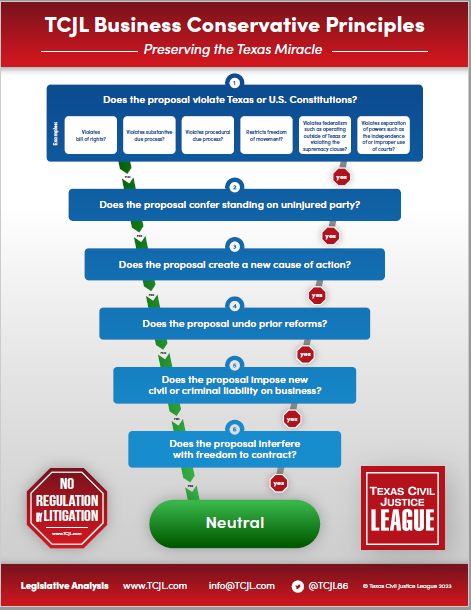 In another opinion construing the definition of “qualified transaction,” the Dallas-based First Division of the business court has held that the amount in controversy in a suit to collect on a demand note includes both principal and interest.
In another opinion construing the definition of “qualified transaction,” the Dallas-based First Division of the business court has held that the amount in controversy in a suit to collect on a demand note includes both principal and interest.
Atlas IDF, LP v. NexPoint Real Estate Partners, LLC f/k/a HCRE Partners, LLC and Nancy Dondero (Cause No. 24-BC01B-0004; May 13, 2025) arose from Atlas’s suit to collect on a pair of demand promissory notes between HCRE and its guarantor, Dondero. The first, executed in May, 2014, had a principal of $2.3 million, with 9% interest compounded annually. The second, also in May, 2014, had a principal of $5 million and the same interest rate. There were additional notes assigned to Atlas by another lender pursuant to a purchase and sale agreement (PSA). By consequence of the PSA, as of January 31, 2025, HCRE owed $7.3 million in principal and $6.4 million in interest, or $13.7 million, on the notes.
In an opinion by Justice Whitehill, the court concluded that it had jurisdiction. Atlas argued that the definition of “qualified transaction” under § 25A.001(14), Government Code, based on the aggregate value of consideration, which exceeded $10 million. It argued further that the PSA entitled Atlas to recive nearly $14 million, also in excess of the threshold. Atlas contended that at the time of the transaction, the aggregate value, including principal and interest, were well over the jurisdictional limit (the HCRE notes, at the time of execution of the PSA inb 2016, had an outstanding balance of $8.9 million). HCRE responded that at the time of the PSA, the outstanding balance was less than $10 million because the notes hadn’t accrued any interest. It further argued that the PSA wasn’t a qualified transaction because “it is not the ‘lending transaction at issue.’” Finally, HCRE asserted that the statute’s unambiguous language excludes interest when determining amount in controversy.
Looking first to Texas’ liberal pleading standard, Justice Whitehill observed that “[i]f the evidence creates a fact question regarding the jurisdictional issue, the court cannot grant the plea and the fact finder will resolve the fact issue” (citation omitted). Here Atlas pleaded jurisdictional facts that bring the PSA within the definition “because Atlas would not have its claims in the suit but for the PSA.” This “but-for” causation met the statutory standard for a dispute “arising out of” a qualified transaction (i.e., but for the assignment of the HCRE notes to Atlas, it couldn’t have filed suit to collect on them).
The question then became whether the $10 million (now $5 million, per 2025 legislative amendment) threshold, measured at the time of the transaction in terms of the value of the consideration the parties placed on their bargain. Turning to the HCRE demand notes, Judge Whitehill noted that “the time of payment on a demand note is not definite when it is made and thus neither is the total amount of interest that will be due on the note” (citing § 3.108, Business & Commerce Code). Nevertheless, “the payee’s interest on one is part of its consideration for the note.” Atlas established that the consideration received in 2016 from assignment of the HCRE notes could easily have been valued at greater than the amount of principal stated in the notes based on “the expectation that the amount of interest would grow before there was a payment demand.” That’s what Atlas pleaded, and HCRE had no counter. What Atlas got from the PSA, according to its pleadings, totaled at least $17.2 million (and perhaps more) “based on the HCRE Notes’ present value” in October 2016, without interest (plus the value of terminated third-party seller notes, which came to $8.9 million). The PSA was thus a qualified transaction.
HCRE contended, however, that when interest is excluded the combined principal amounts, which it valued at $7.3 million, fell well short of the jurisdictional threshold. HCRE based this argument on the language of § 25A.004(d), which excluded “interest, statutory damages, exemplary damages, penalties, attorney’s fees, and court costs.” Not so, said Justice Whitehill, for two reasons. “First,” he wrote,” we conclude that ‘jurisdiction is determined by the amount recoverable under the pleadings at the commencement of the suit’” (citations omitted). Second, and perhaps more importantly for statutory construction of this section going forward, “interest accrued on the terms of a promissory note before filing suit is not the type of ‘interest’ § 25A.004(d) excludes.” Instead, “the entire principal and interest due on the HCRE Notes represents the amount in controversy because ‘[i]t has long been the law that the phrase ‘amount in controversy,’ in the jurisdictional context, means ‘the sum of money or the value of the thing orginally sued for’” (citations omitted). No question Atlas is suing for more than $10 million in principal and interest, and as “the Texas Court of Appeals stated in 1887, ‘[t]his suit being upon a promissory note, it is manifest that the plaintiff could recover no more than legal interest as damages, and in fact his suit is brought to recover no more than the principal on the debt’ and therefore the ‘real amount in controversy was the debt and interest thereon’” (citation omitted). Some things don’t change in 140 years.
Justice Whitehill is certainly correct that the statutory exclusion of “interest” refers to pre- and post-judgment interest and other “accessory forms of interest, such as statutory interest, and not interest that forms the primary basis of a party’s claim” (citations omitted). Here is another fine example of a business court judge reading the law and telling us in a straightforward way what it is and how it applies. The Governor clearly knew what he was doing when he appointed these judges to this court.












